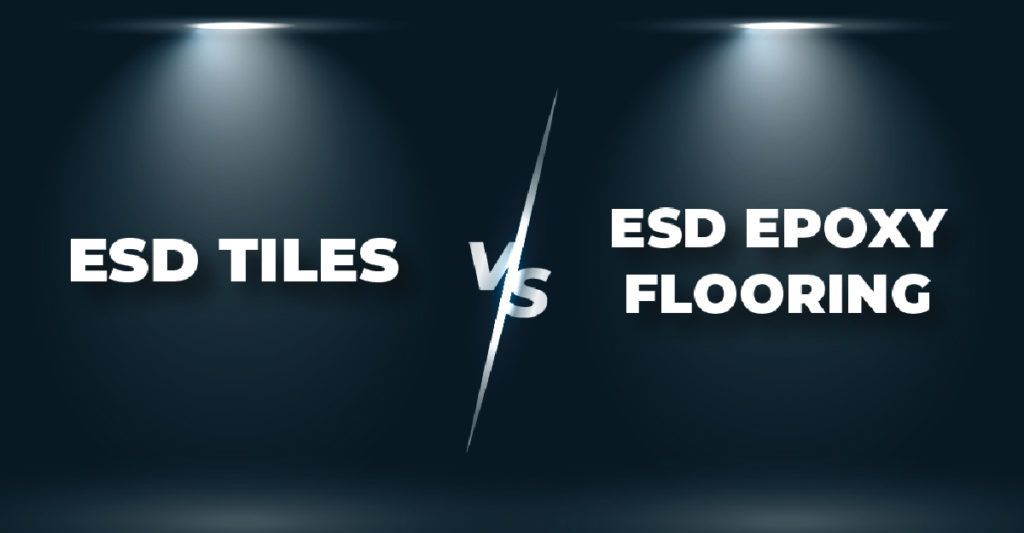There is a lot of ambiguity concerning ESD Flooring. Are there different types of ESD Flooring? Do we need ESD tiles or ESD flooring? How are they different? How do you decide which type to choose? Are they equally efficient?
To answer these questions, it is essential to have a clear perspective of the type of industry to be established, and it’s everyday-requirements. To decide on a befitting flooring solution to it, we need to know the elements exposed to the flooring and what it has to withstand on a day-to-day basis.
ESD tiles are made up of polyvinyl chloride resin, conductive materials, stabilizers, plasticizers, pigments, and other auxiliary materials. Here the commonly used conductive material is chopped carbon fibers which resemble small strands of hair. These tiles are much like regular tiles in application and maintenance. The undesirable consequence of ESD tiles is its abilities to withstand heavy loads and strong chemicals and is also susceptible to delamination under heavy loads. In this case, using these tiles would result in frequent breakage and damage. Eventually, this would increase rework expenses and an unsafe or non-EPA (ESD Protected Area) workspace.
ESD flooring, on the other hand, is employed over ESD tiles by leading industries across the globe. The reason being its ability to withstand immense weight, high resistance to harsh chemicals, ease of rework, and the ability to maintain uniform resistance. ESD floorings have moderate initial costs and are long-lasting and re-coatable, thus ensuring minimal maintenance cost over the years. ESD floor coating systems claim easy rework because they can be installed over an old ESD floor coating, as long as the old floor coating is well adhered. ESD flooring solutions come with layers of solutions that assert constant safety. The commonly used conductive material is chopped carbon fiber, which repetitively creates hotspots and uneven distribution of static charges. They are now advanced to nanomaterials to rectify the above defects making ESD flooring unfaltering. This technology being relatively new is fabricated by a limited number of companies, including Latern Nanomaterials in India, thus catering to niche segments of the industry.
Although claims about ESD flooring being marginally higher in price than ESD tiles are common, it is incorrect, as the maintenance cost of ESD tiles is much higher to compensate for the previously declared initial costs. Conclusively ESD flooring solutions have an upper edge when compared to ESD tiles.
